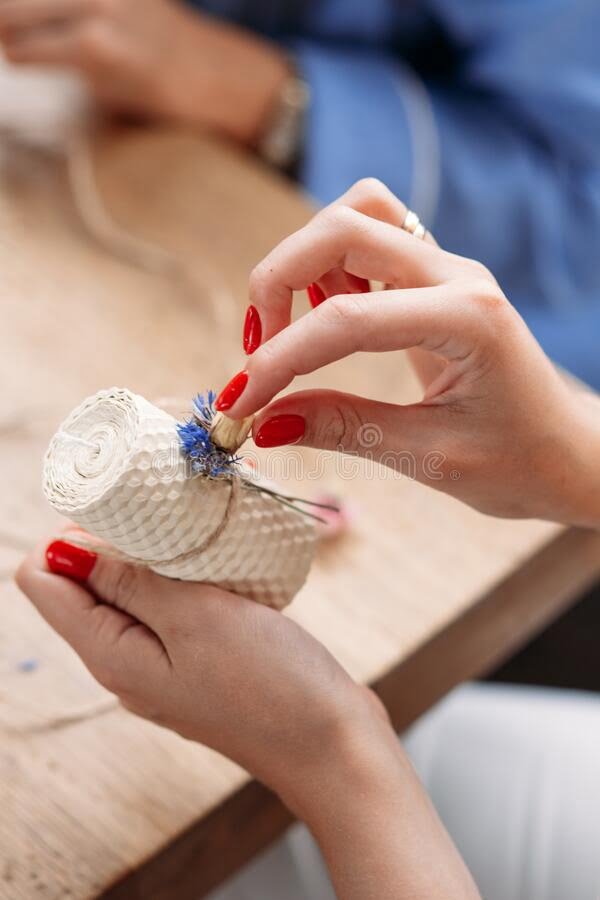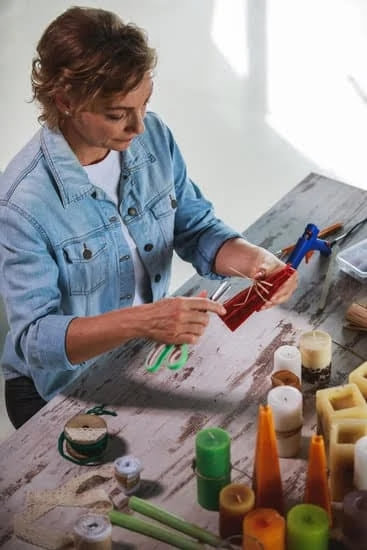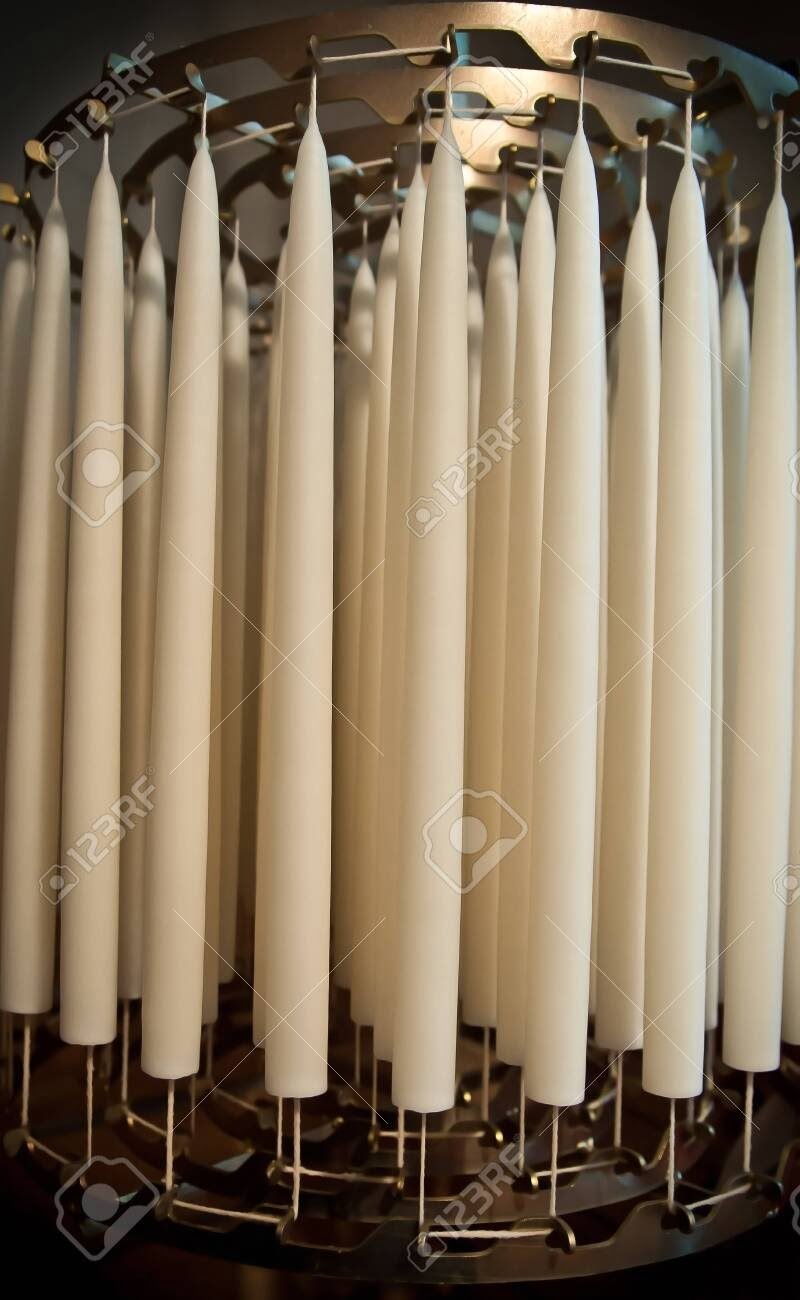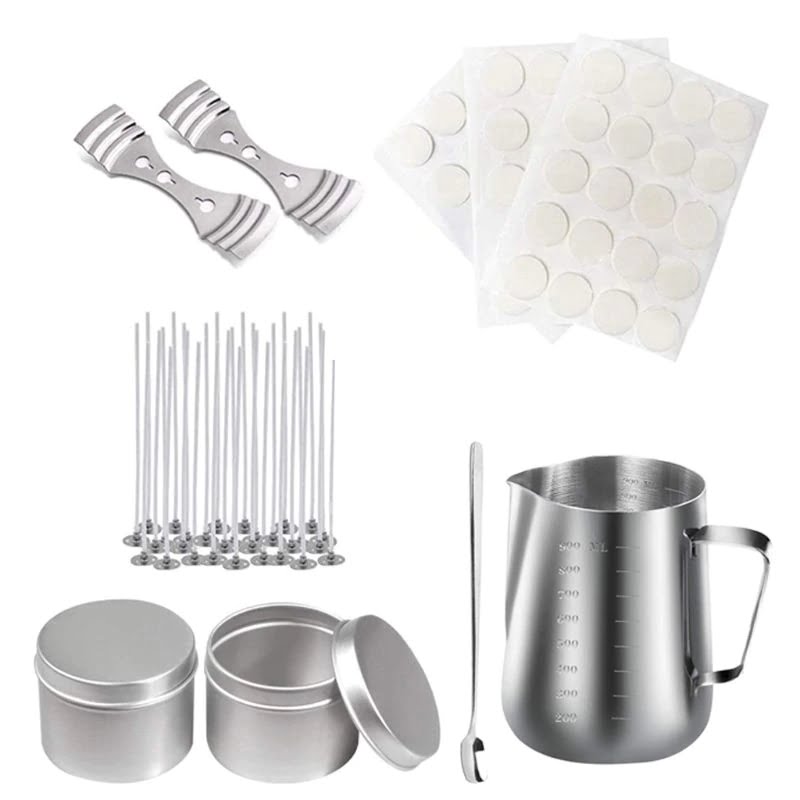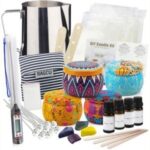Are you interested in making your own fragrant candles but don’t know where to start? If so, you’ve come to the right place. In this article, we will delve into the world of candle making and explore the most fragrant oils that you can use to create beautiful scents for your candles.
When it comes to making candles, fragrance plays a crucial role in setting the mood and atmosphere. The scent of a candle can evoke memories, elevate moods, and create a sense of relaxation or invigoration. Therefore, choosing the right oils for your candles is essential in achieving the desired effect.
In this section, we will discuss the difference between essential oils and fragrance oils, as well as explore the top 5 most fragrant essential oils for candle making. We will also provide tips on how to maximize scent throw in homemade candles and emphasize the importance of quality and purity when choosing fragrance oils. So, if you’re ready to embark on a journey of creating beautifully fragrant candles, keep reading.
Understanding Essential Oils vs Fragrance Oils
When it comes to making candles, the choice of oils used for fragrance is crucial in determining the quality and aroma of the final product. Before delving into the specific types of oils that are most fragrant for making candles, it’s important to understand the key differences between essential oils and fragrance oils.
Essential oils are natural, concentrated extracts derived from plants through methods like distillation or cold-pressing. They are known for their therapeutic properties and vibrant scents, making them a popular choice for candle makers who prioritize natural ingredients.
On the other hand, fragrance oils are synthetic or artificially produced compounds designed to mimic specific aromas. While they may not offer the same therapeutic benefits as essential oils, fragrance oils come in a wider variety of scents and are often more affordable.
To help you make an informed decision about what types of oils to use for your candle making venture, here is a breakdown of the top 5 most fragrant essential oils for creating beautifully scented candles:
- Lavender: Known for its calming and soothing properties, lavender essential oil adds a sweet floral scent to candles.
- Peppermint: With its invigorating and refreshing aroma, peppermint essential oil is perfect for creating energizing candles.
- Lemongrass: A zesty and citrusy scent, lemongrass essential oil brings a bright and uplifting fragrance to candles.
- Vanilla: This classic, warm, and inviting scent of vanilla essential oil adds a comforting sweetness to candle formulations.
- Frankincense: With its deep, earthy aroma, frankincense essential oil lends a sense of grounding and spirituality to candles.
These essential oils can be used individually or blended together to create unique scent combinations that cater to different preferences. Regardless of your choice, it’s important to consider factors such as purity, quality, and compatibility with candle-making materials when selecting your fragrant oils.
In addition to understanding the nuances between essential oils and fragrance oils when it comes to candle making, it’s also valuable to explore how different scents interact with each other. By experimenting with blending various essential oils together, candle makers can create custom fragrances that stand out from commercially available options.
Ultimately, whether using natural or synthetic fragrance sources for candle making purposes, understanding the characteristics and potential combinations of these aromatic substances is vital in producing beautifully fragrant candles. It’s important might also be considering factors such as production costs when choosing which type of source you’ll use not just on how strong you want smell but also taking into account future market demand trends.
Top 5 Most Fragrant Essential Oils for Candle Making
When it comes to making candles, choosing the right oils for fragrance is essential to creating a beautifully scented product. Essential oils are a popular choice for adding fragrance to homemade candles, as they are natural and offer a wide range of delightful scents. If you’re wondering what oils are the most fragrant for making candles, look no further. Here are the top 5 most fragrant essential oils that are perfect for candle making:
- Lavender Essential Oil: Known for its calming and soothing properties, lavender essential oil is a popular choice for candle making. Its sweet, floral aroma makes it perfect for relaxation and stress relief.
- Peppermint Essential Oil: With its refreshing and invigorating scent, peppermint essential oil is an excellent choice for creating energizing candles. It’s also known for its ability to clear the mind and improve focus.
- Lemon Essential Oil: Bright and uplifting, lemon essential oil is perfect for adding a fresh and citrusy scent to your candles. It’s great for creating an inviting atmosphere in any space.
- Vanilla Essential Oil: Warm and comforting, vanilla essential oil adds a sweet and cozy aroma to homemade candles. It’s a classic fragrance that is loved by many.
- Frankincense Essential Oil: Rich and woody, frankincense essential oil brings a sense of grounding and spiritual connection to your candles. Its deep aroma is perfect for creating a calming ambiance.
These top 5 most fragrant essential oils offer a wide variety of scents that can be used individually or blended together to create unique combinations. Whether you’re looking for relaxation, energy, freshness, warmth, or grounding, these essential oils have got you covered when it comes to making beautifully fragrant candles.
Exploring Blending Essential Oils for Unique Scents
When it comes to creating beautifully fragrant candles, blending essential oils can be a great way to customize and create unique scents. By combining different essential oils, you can tailor the fragrance of your candles to your personal preferences or even create signature scents for special occasions or events.
The Art of Blending Essential Oils
Blending essential oils is both a science and an art. It requires an understanding of the properties and fragrance notes of each oil, as well as experimentation to find the perfect balance of scents. Some essential oils have strong top notes, while others have more subtle base notes. By blending oils with different note strengths, you can create complex and multi-layered fragrances for your candles.
Top Essential Oils for Blending
When considering what oils are the most fragrant for making candles, it’s important to choose high-quality essential oils that are known for their strong and pleasing scents. Some popular essential oils for blending in candle making include lavender, citrus (such as bergamot or orange), vanilla, rosemary, and peppermint. Each of these oils brings its own unique aroma and therapeutic benefits to the blend.
Creating Unique Scents
By combining different essential oils in various proportions, candle makers can create entirely new scent profiles that cannot be achieved with single oils alone. For example, blending lavender with citrus notes can result in a refreshing and calming fragrance, perfect for promoting relaxation. Experimenting with different combinations allows for endless possibilities in creating one-of-a-kind scents for your candles.
By exploring the art of blending essential oils for candle making, you have the opportunity to craft truly unique and delightful fragrances that will fill any space with beauty and ambiance. Experiment with different combinations, take note of how they change over time when mixed together, and most importantly – trust your intuition.
Comparison of Natural vs Synthetic Fragrances for Candles
When it comes to choosing the right oils for making fragrant candles, one of the key decisions you’ll have to make is whether to use natural essential oils or synthetic fragrance oils. Each option has its own advantages and considerations, so it’s important to weigh them carefully before making your decision.
Natural Essential Oils
Natural essential oils are derived from plants and botanical sources, offering a wide range of captivating scents. These oils are prized for their purity and therapeutic benefits, as they are extracted directly from nature. Some of the most popular and fragrant essential oils for candle making include lavender, peppermint, eucalyptus, citrus oils like lemon or orange, and floral options like rose or jasmine.
Synthetic Fragrance Oils
On the other hand, synthetic fragrance oils are created in laboratories to mimic natural scents or create entirely new ones. While some may argue that these fragrances lack the purity and authenticity of natural essential oils, they offer a wider variety of scents that may not be readily available in nature. Additionally, synthetic fragrance oils often have a more consistent and stronger scent throw compared to natural essential oils.
It’s important to note that both natural and synthetic fragrances have their own set of pros and cons when it comes to candle making. Some crafters prefer the all-natural approach for its purity and environmental friendliness while others lean towards synthetic options for their affordability and wider variety of scents. Ultimately, the choice between natural and synthetic fragrances will depend on your personal preferences and values as a candle maker.
Tips for Maximizing Scent Throw in Homemade Candles
When it comes to making homemade candles, the choice of oils plays a significant role in maximizing scent throw. Scent throw refers to the strength and spread of fragrance when the candle is burning, and it is essential for creating a captivating ambiance in any space. To achieve the best results, it’s crucial to select oils that are highly fragrant and have good staying power.
One way to enhance scent throw in homemade candles is by using essential oils known for their strong and long-lasting fragrance. Oils such as lavender, rosemary, and eucalyptus are known for their potent aroma, making them ideal choices for candle making. These essential oils not only provide a pleasant scent but also offer additional therapeutic benefits when the candle is lit.
In addition to selecting highly fragrant essential oils, another tip for maximizing scent throw in homemade candles is to use high-quality fragrance oils. Fragrance oils are specially formulated to release strong and long-lasting scents when combined with wax.
Look for fragrance oils that are specifically designed for candle making, as they are formulated to disperse effectively throughout the melted wax and maintain their fragrance integrity when the candle burns. By using these high-quality fragrance oils, you can ensure that your homemade candles fill the room with delightful scents that last.
The Importance of Quality and Purity in Fragrance Oils
When it comes to making candles, choosing the right fragrance oils is crucial in creating beautifully scented products. The importance of quality and purity in fragrance oils cannot be overstated, as these elements can significantly impact the overall scent throw and aroma of your candles.
Quality fragrance oils are essential for achieving strong and long-lasting scents in candles. It’s important to invest in high-quality oils that are specifically formulated for candle making, as they are designed to disperse scent effectively when heated. Additionally, pure fragrance oils contain no added chemicals or fillers, ensuring a clean and true scent when used in candles.
Purity is also a key factor to consider when selecting fragrance oils for candle making. Pure fragrance oils are derived from natural sources and do not contain any synthetic additives or dilutions. This results in a more authentic aroma that is free from any artificial or chemical undertones. When choosing fragrance oils for your candles, opt for those that are 100% pure to achieve the best results.
It’s important to note that not all fragrance oils are created equal. Some may contain impurities or synthetic additives that can affect the quality of your candles’ scent. By prioritizing quality and purity in your selection of fragrance oils, you can ensure that your homemade candles will emit beautiful, true-to-life aromas that enhance any space.
Troubleshooting Common Issues With Scented Candle Making
When it comes to scented candle making, there are various issues that can arise during the process. From scent throw problems to uneven burning, troubleshooting common issues is essential for creating beautifully fragrant candles. One of the most common problems in scented candle making is a poor cold throw, where the scent isn’t noticeable until the candle is lit.
This can be caused by using low-quality fragrance oils or improper blending techniques. Understanding how to troubleshoot these issues can make a significant difference in the end result of your candles.
Another common issue that candle makers encounter is tunneling, where the wax burns down the center, leaving excessive wax along the edges. This can be caused by using the wrong size wick or pouring your candle at too high of a temperature. Properly troubleshooting this issue involves experimenting with different wick sizes and testing different pouring temperatures to achieve an even burn.
In addition to poor scent throw and tunneling, another common problem in scented candle making is frosting, which appears as a white, powdery substance on the surface of the wax. This can occur due to temperature fluctuations during cooling or using low-quality wax. Troubleshooting this issue may involve adjusting your pouring temperature and using higher-quality ingredients to minimize frosting and achieve a smooth finish.
| Common Issue | Possible Solution |
|---|---|
| Poor Cold Throw | Use high-quality fragrance oils Experiment with different blending techniques |
| Tunneling | Try different wick sizes Pour at lower temperatures |
| Frosting | Adjust pouring temperature Use higher-quality wax |
Conclusion
In conclusion, the fragrance used in candle making plays a critical role in the overall quality and appeal of the final product. Whether using essential oils or fragrance oils, selecting the right oils is essential for creating beautifully fragrant candles that can enhance any space. Understanding the difference between essential oils and fragrance oils, as well as how to maximize their scent throw, is crucial for success in candle making.
When it comes to choosing the most fragrant oils for making candles, there are several options to consider. Essential oils such as lavender, vanilla, citrus, eucalyptus, and sandalwood are among the top choices for their strong and pleasant scents. Additionally, blending these essential oils can lead to unique and personalized fragrances that set your candles apart from others on the market.
Furthermore, whether opting for natural or synthetic fragrances, prioritizing quality and purity is key. Investing in high-quality fragrance oils that are free from contaminants or impurities can ensure that your candles emit a pleasant and long-lasting aroma. By keeping these factors in mind and experimenting with different oil combinations, you can create beautifully fragrant candles that will delight customers and enhance any environment.

Welcome to my candle making blog! In this blog, I will be sharing my tips and tricks for making candles. I will also be sharing some of my favorite recipes.

